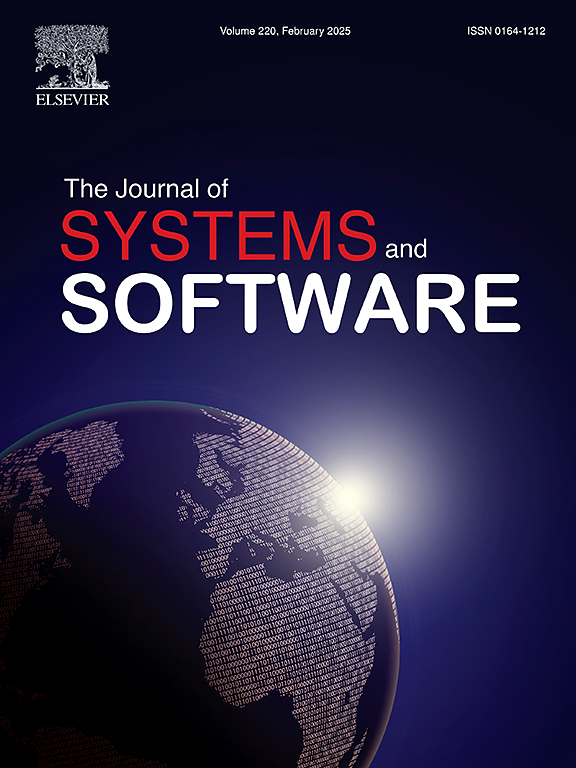On the understandability of machine learning practices in deep learning and reinforcement learning based systems
IF 3.7
2区 计算机科学
Q1 COMPUTER SCIENCE, SOFTWARE ENGINEERING
引用次数: 0
Abstract
Machine learning (ML) has emerged as a transformative subject, using various algorithms to help systems analyze data and make predictions. Deep Learning (DL) uses neural networks to address hard problems. Reinforcement Learning (RL) is a way to solve problems by making consecutive decisions.
Understanding ML systems based only on the source code is often a challenging task, especially for inexperienced developers. In a controlled experiment involving one hundred fifty-eight participants, we assessed the understandability of ML-based systems and workflows through source code inspection compared to semi-formal representations in models and metrics.
We hypothesize that ML system diagrams modeling details of ML workflows and practices like transfer learning and checkpoints can enhance the understandability of ML practices in system design comprehension tasks, assessed through task correctness. Additionally, providing these sources could lead to an increase in task duration, and we expect a significant correlation between correctness and duration.
Our findings show that providing semi-formal ML system diagrams with the source code improves the effectiveness of the correctness for the DL relevant tasks. The control group had an average correctness of 0.7121, while the experimental group had a higher average correctness of 0.7759. On the other hand, participants who received only the system source code showed slightly better performance in the correctness task (average correctness 0.6808) within the RL relevant tasks compared to those who also received the semi-formal diagrams (average correctness of 0.6612). However, no significant difference was found in the duration task between the two. The control group, for the DL relevant tasks, took an average of 1571.62 s, whereas the experimental group took an average of 1763.85 s. For the RL relevant tasks, the control group had an average of 1883.80 s, while the experimental group 1925.46 s. However, semi-formal ML system diagrams can benefit specific scenarios.
求助全文
约1分钟内获得全文
求助全文
来源期刊

Journal of Systems and Software
工程技术-计算机:理论方法
CiteScore
8.60
自引率
5.70%
发文量
193
审稿时长
16 weeks
期刊介绍:
The Journal of Systems and Software publishes papers covering all aspects of software engineering and related hardware-software-systems issues. All articles should include a validation of the idea presented, e.g. through case studies, experiments, or systematic comparisons with other approaches already in practice. Topics of interest include, but are not limited to:
•Methods and tools for, and empirical studies on, software requirements, design, architecture, verification and validation, maintenance and evolution
•Agile, model-driven, service-oriented, open source and global software development
•Approaches for mobile, multiprocessing, real-time, distributed, cloud-based, dependable and virtualized systems
•Human factors and management concerns of software development
•Data management and big data issues of software systems
•Metrics and evaluation, data mining of software development resources
•Business and economic aspects of software development processes
The journal welcomes state-of-the-art surveys and reports of practical experience for all of these topics.
 求助内容:
求助内容: 应助结果提醒方式:
应助结果提醒方式:


